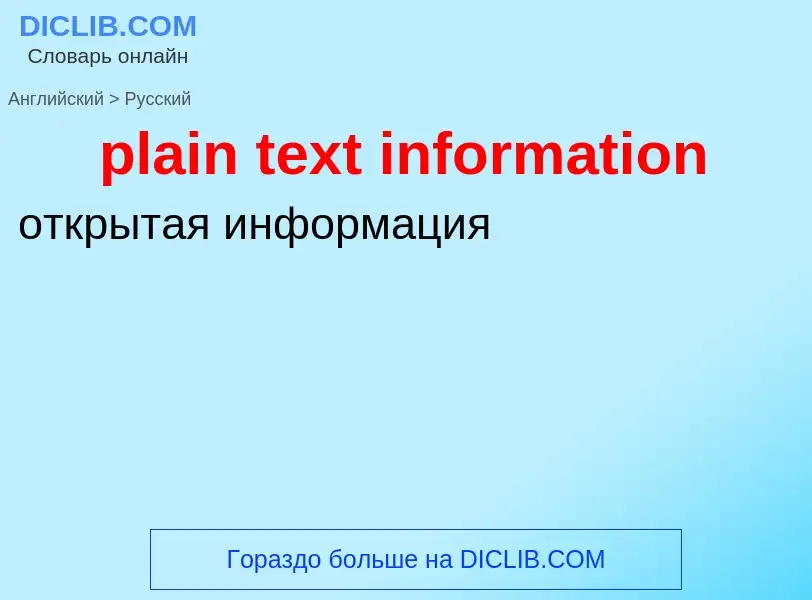Translation and analysis of words by ChatGPT artificial intelligence
On this page you can get a detailed analysis of a word or phrase, produced by the best artificial intelligence technology to date:
- how the word is used
- frequency of use
- it is used more often in oral or written speech
- word translation options
- usage examples (several phrases with translation)
- etymology
plain text information - translation to russian
общая лексика
незашифрованный, открытый текст или информация
в криптологии - сообщение, подлежащее засекречиванию. В результате применения к нему методов шифрования такой текст становится непонятным для посторонних. Существует два основных метода преобразования открытого текста: перестановки символов и замена знаков. К открытым текстам относится также и речь
синоним
Смотрите также
Wikipedia

In computing, plain text is a loose term for data (e.g. file contents) that represent only characters of readable material but not its graphical representation nor other objects (floating-point numbers, images, etc.). It may also include a limited number of "whitespace" characters that affect simple arrangement of text, such as spaces, line breaks, or tabulation characters. Plain text is different from formatted text, where style information is included; from structured text, where structural parts of the document such as paragraphs, sections, and the like are identified; and from binary files in which some portions must be interpreted as binary objects (encoded integers, real numbers, images, etc.).
The term is sometimes used quite loosely, to mean files that contain only "readable" content (or just files with nothing that the speaker doesn't prefer). For example, that could exclude any indication of fonts or layout (such as markup, markdown, or even tabs); characters such as curly quotes, non-breaking spaces, soft hyphens, em dashes, and/or ligatures; or other things.
In principle, plain text can be in any encoding, but occasionally the term is taken to imply ASCII. As Unicode-based encodings such as UTF-8 and UTF-16 become more common, that usage may be shrinking.
Plain text is also sometimes used only to exclude "binary" files: those in which at least some parts of the file cannot be correctly interpreted via the character encoding in effect. For example, a file or string consisting of "hello" (in whatever encoding), following by 4 bytes that express a binary integer that is not just a character(s), is a binary file, not plain text by even the loosest common usages. Put another way, translating a plain text file to a character encoding that uses entirely different numbers to represent characters does not change the meaning (so long as you know what encoding is in use), but for binary files such a conversion does change the meaning of at least some parts of the file.

![cat]]</code> in an [[xterm]] window cat]]</code> in an [[xterm]] window](https://commons.wikimedia.org/wiki/Special:FilePath/Plain text.png?width=200)
